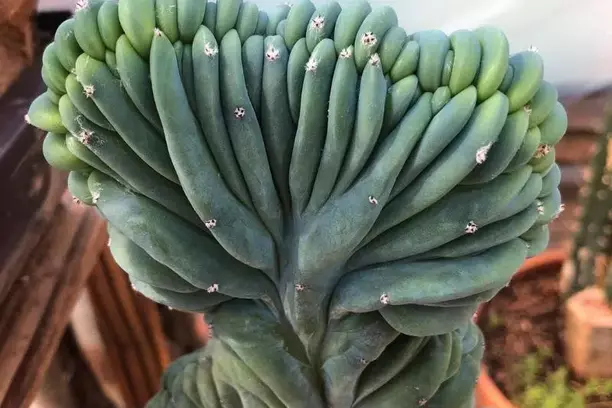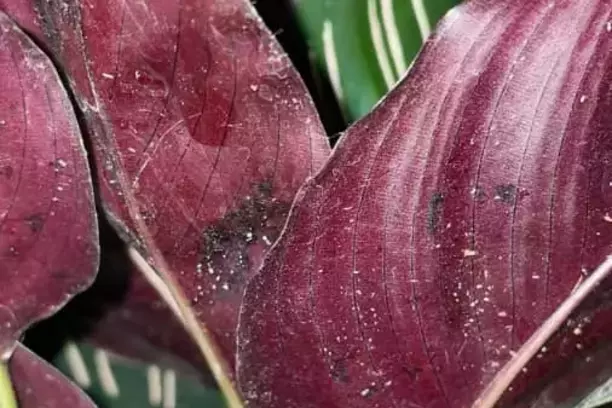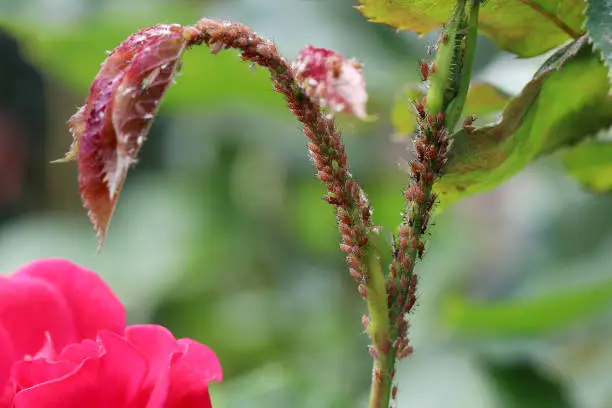Indoor palm trees are a popular choice for houseplants due to their tropical appearance and ease of care. In this article, we will explore some of the most popular types of indoor palm trees and provide information on how to care for them.
One of the most common types of indoor palm trees is the Areca palm. This palm tree is known for its feathery fronds and ability to purify the air. Another popular choice is the Kentia palm, which has a slender trunk and long, arching fronds. The Parlor palm is a smaller option that is perfect for smaller spaces, while the Majesty palm is a larger option that can add a dramatic touch to any room.
When it comes to caring for indoor palm trees, it is important to provide them with the right amount of water, light, and nutrients. Most indoor palm trees prefer bright, indirect light and well-draining soil. They also benefit from regular fertilization and occasional pruning to remove dead or damaged fronds. With the proper care, indoor palm trees can thrive and add a touch of tropical flair to any indoor space.
Understanding Indoor Palm Trees
Indoor palm trees are a popular choice for adding a touch of tropical flair to any interior space. These tree-like or shrub palms are commonly used for indoor decoration due to their attractive foliage and easy maintenance. In this section, we will discuss the basics of indoor palm trees, including their characteristics, care requirements, and popular species.
Characteristics of Indoor Palm Trees
Indoor palm trees come in a variety of shapes and sizes, but they all share some common characteristics. These include:
- Long, slender trunks or stems
- Large, feathery fronds or leaves
- Slow growth rate
- Tolerance for low light and dry indoor air
- Ability to remove toxins from the air
Care Requirements for Indoor Palm Trees
Indoor palm trees are relatively easy to care for, but they do have some specific needs. Here are some tips for keeping your indoor palm tree healthy:
- Water your palm tree when the soil feels dry to the touch, but avoid overwatering.
- Provide your palm tree with bright, indirect light, but avoid direct sunlight.
- Keep your palm tree in a humid environment, such as a bathroom or near a humidifier.
- Fertilize your palm tree with a balanced fertilizer every two to three months during the growing season.
Popular Species of Indoor Palm Trees
There are many species of indoor palm trees to choose from, each with its own unique characteristics. Here are some popular species of indoor palm trees:
- Areca Palm (Dypsis lutescens): A popular choice for its feathery fronds and ability to remove toxins from the air.
- Bamboo Palm (Chamaedorea seifrizii): A small palm that is perfect for tight spaces and low light conditions.
- Kentia Palm (Howea forsteriana): A slow-growing palm with a graceful, arching form.
- Lady Palm (Rhapis excelsa): A multi-stemmed palm with fan-like fronds that is ideal for adding texture to a room.
- Majesty Palm (Ravenea rivularis): A tall, dramatic palm with large, glossy fronds that is perfect for adding a tropical touch to a space.
In conclusion, indoor palm trees are a great way to add natural beauty and a touch of the tropics to your home or office. With proper care and attention, your indoor palm tree can thrive and bring joy for years to come.
Common Types of Indoor Palm Trees
Indoor palm trees are a great way to bring a touch of the tropics into your home. There are many different types of indoor palm trees to choose from, each with its own unique characteristics. In this section, we will discuss some of the most common types of indoor palm trees.
Areca Palm
The Areca palm is one of the most popular types of indoor palm trees. It is known for its feathery fronds and its ability to remove toxins from the air. This palm tree can grow up to 7 feet tall and is relatively easy to care for.
Chamaedorea Elegans
Also known as the “parlor palm,” the Chamaedorea Elegans is a popular choice for indoor palm trees. It has delicate fronds and can grow up to 6 feet tall. This palm tree prefers indirect light and moist soil.
Parlor Palm
The Parlor palm is a small, slow-growing palm tree that is perfect for indoor spaces. It has delicate fronds and can grow up to 4 feet tall. This palm tree prefers bright, indirect light and moist soil.
Chinese Fan Palm
The Chinese Fan Palm is a popular choice for indoor palm trees. It has large, fan-shaped fronds and can grow up to 6 feet tall. This palm tree prefers bright, indirect light and well-draining soil.
Livistona Chinensis
The Livistona Chinensis is a beautiful palm tree with large, fan-shaped fronds. It can grow up to 10 feet tall and prefers bright, indirect light and well-draining soil.
Majesty Palm
The Majesty Palm is a popular choice for indoor palm trees. It has large, feathery fronds and can grow up to 10 feet tall. This palm tree prefers bright, indirect light and well-draining soil.
Ponytail Palm
The Ponytail Palm is a unique palm tree with a bulbous trunk and long, thin fronds that resemble a ponytail. It can grow up to 10 feet tall and prefers bright, indirect light and well-draining soil.
Kentia Palm
The Kentia Palm is a popular choice for indoor palm trees. It has long, thin fronds and can grow up to 10 feet tall. This palm tree prefers bright, indirect light and well-draining soil.
Dypsis Lutescens
Also known as the “Areca Palm,” the Dypsis Lutescens is a popular choice for indoor palm trees. It has feathery fronds and can grow up to 10 feet tall. This palm tree prefers bright, indirect light and well-draining soil.
Bamboo Palm
The Bamboo Palm is a popular choice for indoor palm trees. It has long, thin fronds and can grow up to 12 feet tall. This palm tree prefers bright, indirect light and well-draining soil.
Cascade Palm
The Cascade Palm is a unique palm tree with long, thin fronds that cascade down from the top of the tree. It can grow up to 10 feet tall and prefers bright, indirect light and well-draining soil.
Beaucarnea Recurvata
The Beaucarnea Recurvata, also known as the “Ponytail Palm,” is a unique palm tree with a bulbous trunk and long, thin fronds that resemble a ponytail. It can grow up to 10 feet tall and prefers bright, indirect light and well-draining soil.
Sago Palm
The Sago Palm is a unique palm tree with a short, thick trunk and long, feathery fronds. It can grow up to 10 feet tall and prefers bright, indirect light and well-draining soil.
Cycas Revoluta
The Cycas Revoluta is a unique palm tree with a short, thick trunk and long, feathery fronds. It can grow up to 10 feet tall and prefers bright, indirect light and well-draining soil.
Golden Cane Palm
The Golden Cane Palm is a popular choice for indoor palm trees. It has long, thin fronds and can grow up to 10 feet tall. This palm tree prefers bright, indirect light and well-draining soil.
Fountain Palm
The Fountain Palm is a unique palm tree with long, thin fronds that resemble a fountain. It can grow up to 10 feet tall and prefers bright, indirect light and well-draining soil.
Caryota Mitis
The Caryota Mitis is a unique palm tree with long, thin fronds that resemble a fish tail. It can grow up to 10 feet tall and prefers bright, indirect light and well-draining soil.
Yucca Palm
The Yucca Palm is a unique palm tree with long, thin fronds that resemble a yucca plant. It can grow up to
Proper Care for Indoor Palm Trees
When it comes to caring for your indoor palm trees, there are a few important factors to consider. In this section, we’ll cover the key aspects of proper care for indoor palm trees.
Light Requirements
Indoor palm trees generally require bright, indirect light to thrive. They can also tolerate some direct sunlight, but too much can burn their leaves. If your palm tree isn’t getting enough light, it may become leggy or develop yellowing leaves. Consider placing your palm tree near a window that receives bright, indirect light.
Watering
Proper watering is crucial for the health of your indoor palm tree. Overwatering can lead to root rot, while underwatering can cause the leaves to wilt and turn brown. Generally, you should water your palm tree when the top inch of soil feels dry to the touch. Make sure your pot has adequate drainage holes to prevent water from pooling at the bottom.
Soil Requirements
Indoor palm trees prefer well-draining soil that is rich in organic matter. Consider using a potting mix that contains peat moss, perlite, and vermiculite. Avoid using heavy, clay soils that can retain too much moisture.
Temperature and Humidity
Most indoor palm trees prefer warm temperatures between 60 and 80 degrees Fahrenheit. They also thrive in environments with high humidity. Consider using a humidifier or placing a tray of water near your palm tree to increase the humidity in the air.
Pruning and Repotting
Regular pruning can help keep your indoor palm tree looking neat and healthy. Remove any dead or yellowing leaves, as well as any fronds that are growing too close to the trunk. Repot your palm tree every 2-3 years to ensure it has enough room to grow. Use a pot that is one size larger than the current one and make sure it has adequate drainage holes.
By following these guidelines, you can help ensure that your indoor palm tree stays healthy and vibrant. Remember to monitor your palm tree’s light, water, soil, temperature, and humidity needs regularly to ensure it thrives in its environment. Consider using a liquid fertilizer every 2-3 months to help promote growth and overall health.
Benefits and Considerations of Indoor Palm Trees
Benefits
Indoor palm trees are a great addition to any home or office space. They not only add a touch of greenery to the space, but they also offer several benefits:
- Air purification: Indoor palm trees are known for their air-purifying properties. They can remove toxins such as formaldehyde, benzene, and carbon monoxide from the air, making the air cleaner and healthier to breathe.
- Low maintenance: Most indoor palm trees are slow growers and require minimal maintenance. They do well in low light conditions and can tolerate drought, making them an ideal choice for busy individuals who don’t have time to care for plants regularly.
- Aesthetic appeal: Indoor palm trees come in a variety of shapes and sizes, making them a versatile addition to any space. They can add a tropical, exotic feel to a room and can be used as a focal point or as a complement to other decor.
- Pet-friendly: Most indoor palm trees are non-toxic to pets, making them a safe choice for pet owners who want to add some greenery to their homes.
Considerations
While indoor palm trees offer several benefits, there are also some considerations to keep in mind when deciding whether to add them to your space:
- Slow growers: While their slow growth can be a benefit, it can also be a drawback for those who want a plant that will grow quickly and fill out a space.
- Toxicity: While most indoor palm trees are non-toxic to pets, some species can be toxic if ingested. It’s important to research the specific species you’re considering and ensure it’s safe for your pets.
- Flowers and fruits: While some indoor palm trees produce flowers and fruits, others do not. If you’re looking for a plant that will produce fruit or flowers, be sure to research the specific species you’re considering.
- Pollutants: While indoor palm trees can remove pollutants from the air, they can also contribute to indoor air pollution if they’re not properly cared for. Overwatering or using certain types of fertilizers can lead to the growth of mold and bacteria, which can release pollutants into the air.
- Drought-tolerant: While indoor palm trees are generally drought-tolerant, they still require some water to thrive. It’s important to ensure you’re providing the right amount of water for the specific species you’re considering.
In conclusion, indoor palm trees offer several benefits and can be a great addition to any space. However, it’s important to consider the specific species you’re considering and ensure it’s a good fit for your space and lifestyle. With proper care and attention, indoor palm trees can provide years of beauty and enjoyment.
Identifying Different Types of Indoor Palm Trees
Indoor palm trees are a great way to add some greenery and tropical vibes into your home. There are many different types of indoor palm trees, each with its unique characteristics. In this section, we will cover some of the most common indoor palm trees and how to identify them.
Fronds
One of the most distinguishing features of indoor palm trees is their fronds. Fronds are the leaves of the palm tree and come in a variety of shapes and sizes. Some indoor palm trees have fan-shaped fronds, while others have arching leaves.
Root System
Another feature to consider when identifying indoor palm trees is their root system. Some indoor palm trees have a subglobosa root system, which means that the roots grow in a circular pattern. Other indoor palm trees have a more traditional root system that grows straight down.
Scientific Name
Knowing the scientific name of an indoor palm tree can also help you identify it. For example, the Areca palm is also known as the Dypsis lutescens, while the Kentia palm is known as the Howea forsteriana.
Here are some of the most common types of indoor palm trees and how to identify them:
- Areca Palm: This indoor palm tree has feathery fronds that arch gracefully. The fronds are typically green or yellow-green and can grow up to 8 feet long.
- Bamboo Palm: This indoor palm tree has slender, reed-like stems and delicate fronds that are light green in color. The fronds grow in clusters and can reach up to 12 inches in length.
- Kentia Palm: This indoor palm tree has long, elegant fronds that grow in a graceful arch. The fronds are dark green and can grow up to 10 feet long.
- Lady Palm: This indoor palm tree has fan-shaped fronds that are divided into many small segments. The fronds are typically dark green and can grow up to 6 feet long.
In conclusion, identifying different types of indoor palm trees can be a fun and rewarding experience. By paying attention to the fronds, root system, and scientific name, you can easily identify the most common indoor palm trees and add some tropical flair to your home.
Frequently Asked Questions
What are some popular indoor palm tree varieties?
There are many popular indoor palm tree varieties that can add a tropical touch to your home decor. Some of the most popular ones include the Areca palm, Bamboo palm, Kentia palm, Lady palm, Majesty palm, and Parlor palm.
How do I care for an indoor Majesty palm?
Majesty palms are a popular indoor palm tree variety and require proper care to thrive indoors. They prefer bright, indirect light and well-draining soil. Keep the soil moist but not waterlogged, and mist the leaves occasionally to increase humidity. Majesty palms also benefit from occasional fertilization with a balanced fertilizer.
What are the benefits of having an indoor palm tree?
Indoor palm trees not only add a touch of tropical ambiance to your home, but they also offer many benefits. They can improve indoor air quality by removing pollutants and increasing humidity levels. They also have a calming effect on the mind and can reduce stress levels.
Can all palm trees grow indoors?
Not all palm trees are suitable for indoor growing conditions. Some palm trees require high levels of light and humidity that cannot be replicated indoors. It is important to choose a palm tree variety that is suitable for indoor growing conditions.
Which indoor palm trees are low maintenance?
Some indoor palm trees are low maintenance and require minimal care. These include the Bamboo palm, Kentia palm, and Parlor palm. These varieties can tolerate lower light levels and do not require frequent watering or fertilization.
What are some common issues with indoor palm trees and how do I address them?
Common issues with indoor palm trees include overwatering, underwatering, pests, and diseases. Overwatering can lead to root rot, while underwatering can cause the leaves to turn brown and dry. Pests such as spider mites and mealybugs can infest indoor palm trees, while diseases such as leaf spot and fungal infections can also occur. Proper care, including proper watering and fertilization, can help prevent these air issues. If pests or diseases do occur, prompt treatment is necessary to prevent further damage to the palm tree.
Reference
- Colorado State University Extension. (n.d.). Palms. Retrieved from https://planttalk.colostate.edu/topics/houseplants/1351-palms/
- Broschat, T. K. (2009). Palms for north Florida (ENH-5). University of Florida IFAS Extension. Retrieved from https://edis.ifas.ufl.edu/publication/EP473



